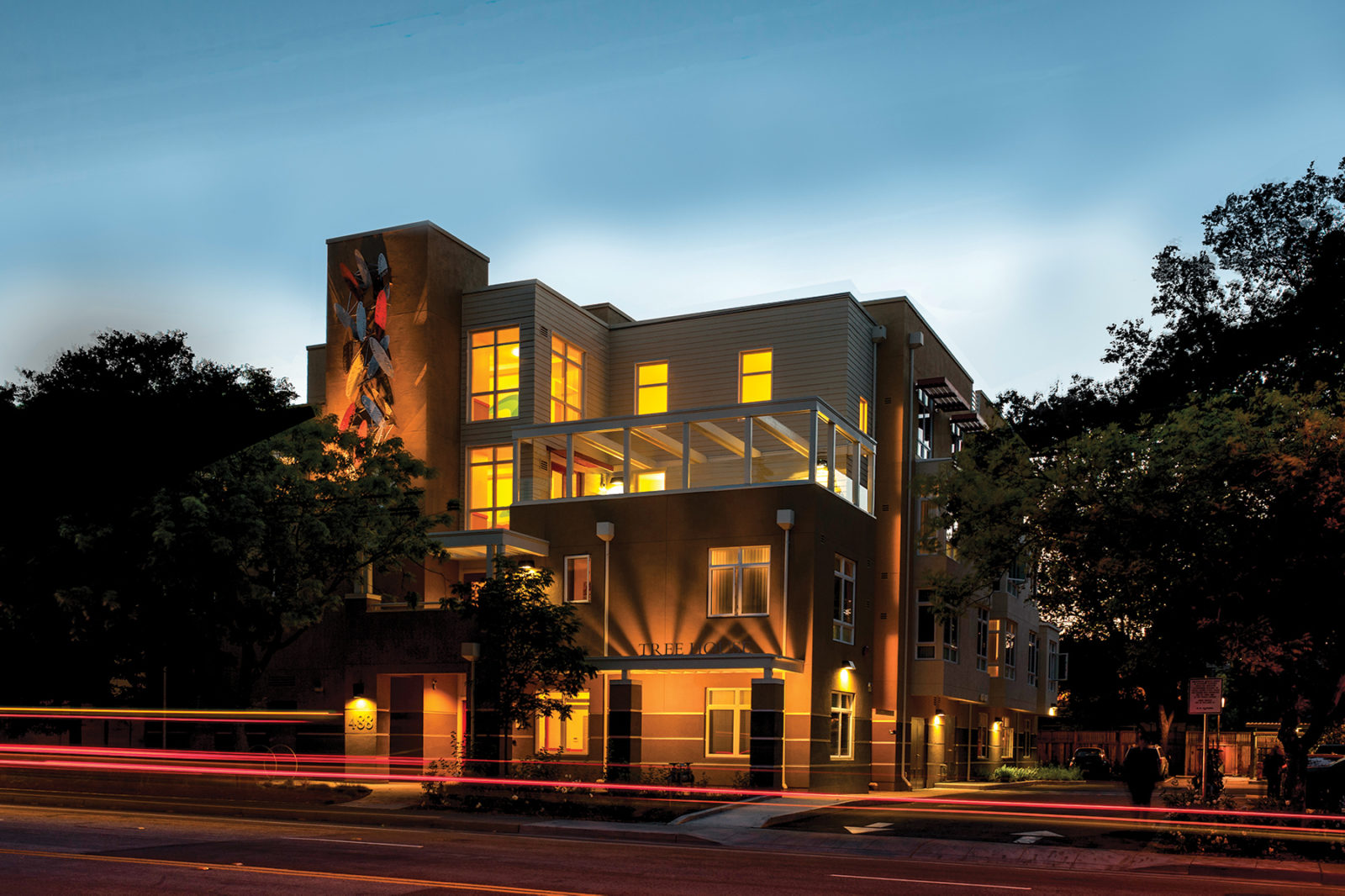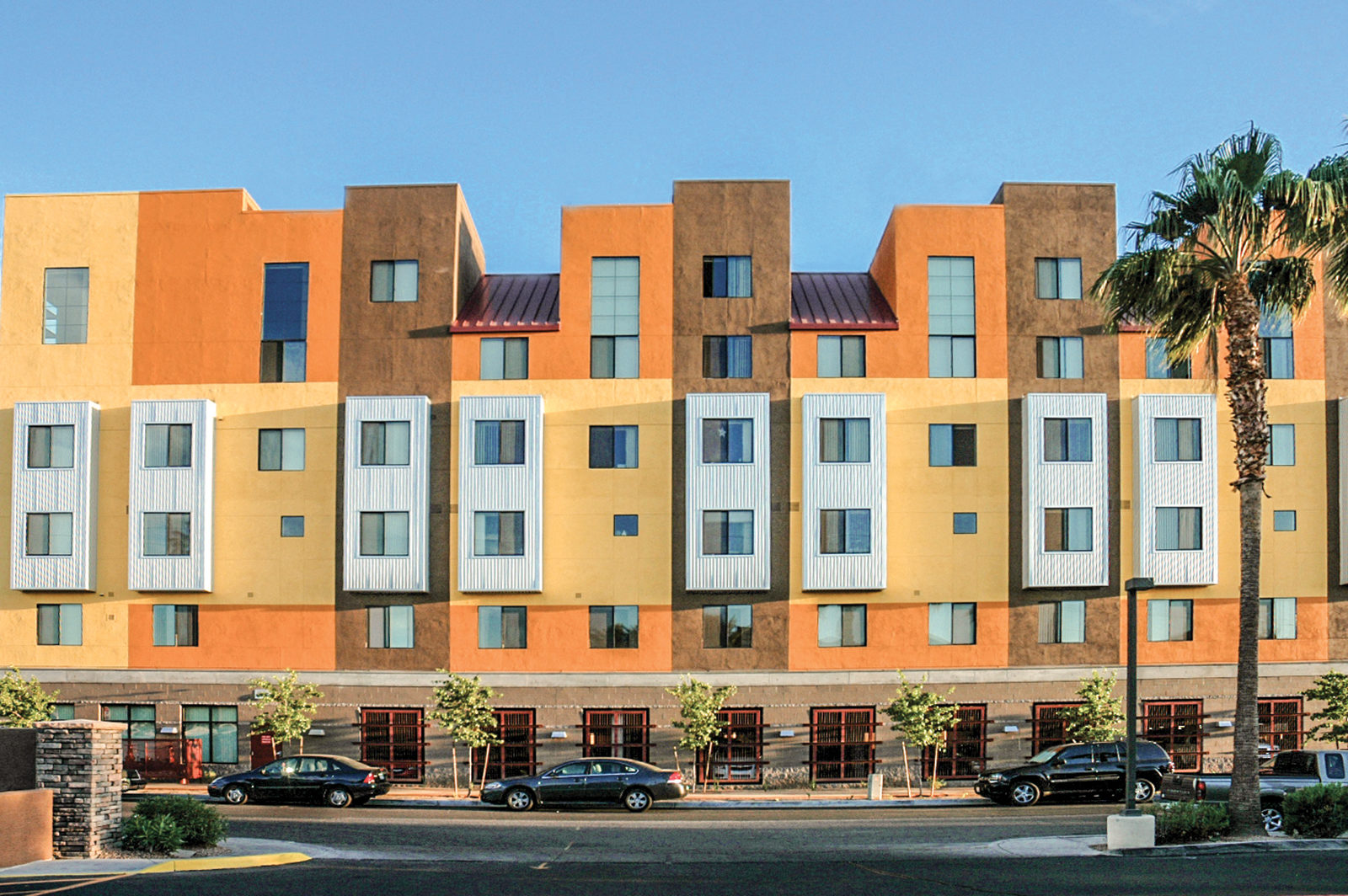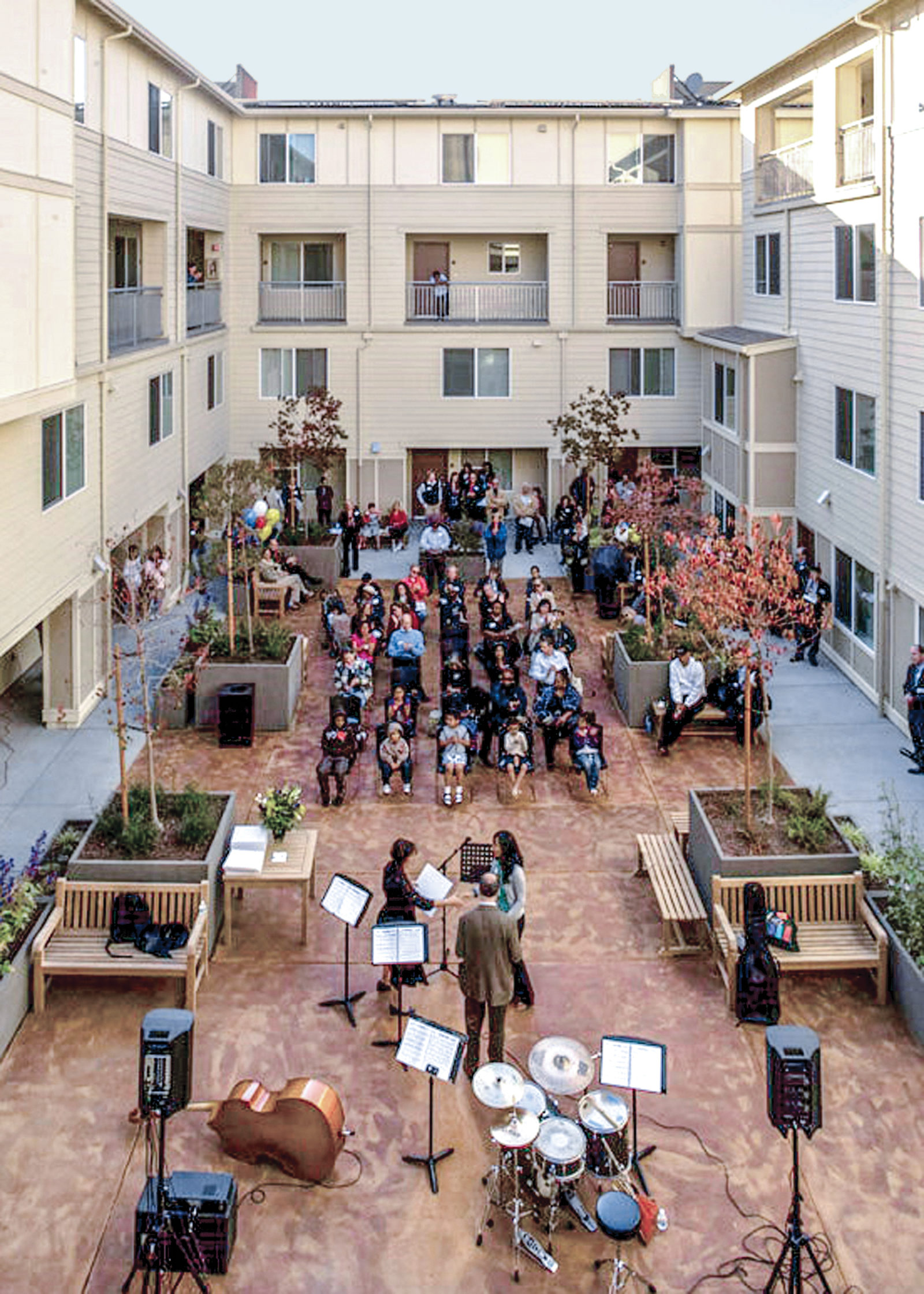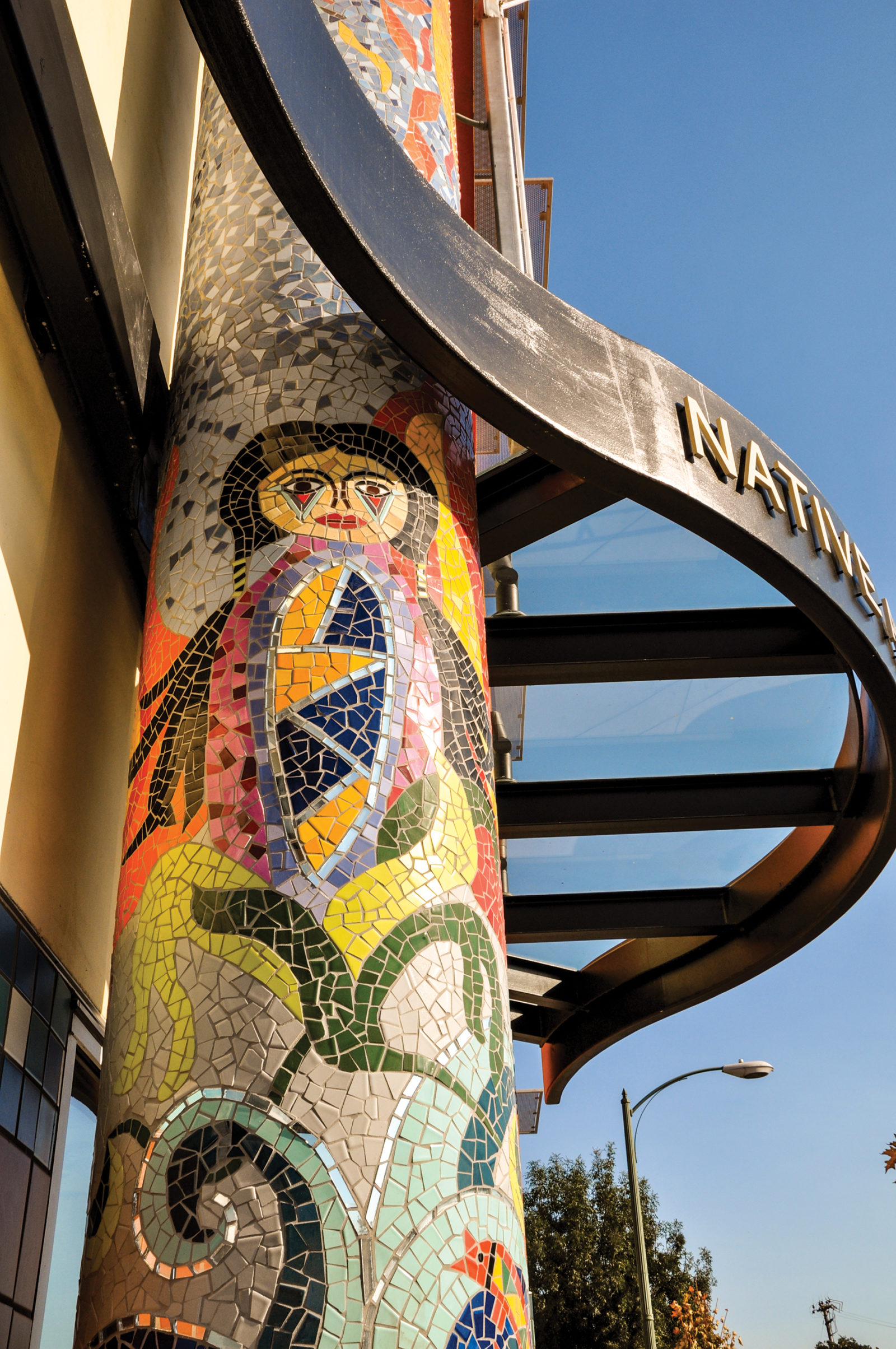The choice to spend most of my career focused on affordable housing was an effort to improve the plight of America’s struggling underclasses. I entered the profession 50 years ago, in the midst of the anti–Vietnam War protests, civil rights struggles, and antipoverty campaigns. In the spring of 1968, when Martin Luther King, Jr., was assassinated, I joined the Poor People’s March on Washington, then led by Ralph Abernathy, and helped build Resurrection City on the Washington Mall. Soon after that, Robert F. Kennedy was gunned down, and Eugene McCarthy, the progressive candidate, did not get the Democratic nomination. It seemed like I was attending a protest somewhere along the New York–DC corridor every weekend.
These formative events shaped my career choices. Our economic system’s inequities were blatantly visible everywhere; closer to the home of my profession, urban renewal was no friend to the poor and much worse for minorities. It seemed only natural that a young architect seeking to apply his craft to address some of these issues would choose housing and community development. Harvard’s Graduate School of Design and Pratt left their marks in skilled form making and problem solving — they just needed the right direction.
It is clear to me, after decades of working within the system, that the housing programs descending from the ones initiated as part of the New Deal were never able to address the fundamental contradictions built into our economic system. Today, we are shocked by the ever-rising costs of delivering housing and by the magnitude of profits earned by all whose hands are in the real estate industry. Equally shocking is the shrinking government commitment to bridge the gap between what it costs to produce housing and what it costs to rent or own it for that 40 percent of Americans who can’t compete because the compensation for their labor is just too low.
Decent housing should be an inalienable right, as should healthcare and education. These are inextricably linked — people can’t have one without the others. Yet they are still very much commodities bought and sold on markets that provide only for those with means and underserve those without. In The Housing Question, Fredrick Engels pointed out 130 years ago the internal contradictions of the capitalist system: Primary employers want to keep workers’ wages low so companies can return sizable profits to their owners and investors. Yet those who produce housing need people’s wages to be as high as possible so they can maximize their profits. As long as housing is treated like any other commodity on the open market, then those who earn more for their labor get more housing, and those who earn less get much less, or none at all — or they must steal from other essentials such as food, health, education, clothing, transportation, and recreation to keep a reasonably decent roof over their heads.
About 40 percent of American households today must spend more than 30 percent of their income for their dwellings; if a household exceeds that figure, it will probably be spending less than it should on other essentials. Some studies show that more than 8 million households are spending as much as 70 percent of their incomes to avoid being homeless. In recent decades, wages have stagnated or diminished for the bottom 40 percent partly because US companies have shifted tens of millions of manufacturing jobs overseas; at the same time, states had to cut safety-net programs because taxes were diminishing under the pressure of free-market politicians.
My generation, unlike the “Greatest” one that slugged its way through the Great Depression and World War II, had been spared seeing widespread homelessness until the Reagan administration dramatically cut Housing and Urban Development’s budget in the early 1980s at the same time it drastically cut taxes on the wealthiest Americans. Up to that point, there was a kind of social contract in America, established by Franklin Delano Roosevelt and accompanied by a strong union movement, based on the belief that those who have more must help those with less for the sake of the greater good.
Even Dwight Eisenhower understood this, taxing the top 10 percent of earners at a 90 percent tax rate during the 1950s to help build the interstate highway system, an infrastructure project that would yield economic benefits for decades, notwithstanding some of its devastating effects on inner cities. After Ronald Reagan, George H. W. Bush, and George W. Bush, that effective tax rate — once all deductions and exemptions were applied — plummeted to about 15 percent. And that transportation system, both highways and rails, is now falling apart because free-market politicians have argued themselves into a corner: to them, government is an impediment to free enterprise, an obstacle to concentrating wealth in the hands of a few.
Enlightened minds in the business sector see the benefits of government-funded housing programs as indirect subsidies to the business community and as supplements to workers’ incomes. These programs allow businesses to pay modest wages that yield the profits expected by investors and owners, while the government pays a sizable portion of a worker’s paycheck usually allocated to housing expenses. But to politicians elected in gerrymandered rural districts, income supplements in the form of housing assistance are seen as handouts that undermine individual responsibility. Hence, the US has one of the weakest housing subsidy programs for lower-income renter households among all industrialized countries, at the same time providing about $200 billion per year as subsidies in the form of tax deductions to homeowners, most of which goes to the top 20 percent.
In a society that is wired to be economically unjust, governed by an ideology that blames individuals for falling behind and not the wiring itself, what are architects to do when it comes to the housing question?
We must first accept the fact that those of us designing affordable housing that depends on these limited subsidy programs are being used to create smoke screens, putting a handsome face on an ugly problem. Through good design, we are making it seem like the United States is solving its housing problem when nothing of the kind is happening. But does this mean we cease and desist and shy away from the challenge? That is one response. Another would be to use our talents to the best of our abilities to create models, demonstrations, or reminders of what the world could be like if the system were more fairly structured at the workplace; if not there, at least a world in which having decent affordable housing is a collective responsibility that should be borne by all of us, just as we do for our highways and the military. Good design for affordable housing keeps those dreams alive for what a better day could look like.
So I offer four of my office’s recent affordable housing developments in that spirit — to demonstrate that in spite of callous disregard for the poor compensation received by millions of working Americans, and the intentional shift of the wealth they produce into the hands of just a few controlling households, there are nonprofit housing development corporations with the savvy, along with their architects, to pull rabbits out of a hat.

Treehouse Palo Alto, California
On a site surrounded by low-rise, high-end condominiums, the Palo Alto Housing Corporation (PAHC) managed to insert a version of an sro (single-room occupancy) for 35 low-income singles and couples, at the same time saving a dozen heritage oak trees. Weathering a lengthy process of resistance based on “parking and traffic” concerns, pahc with our help steered its project to completion with a design that captures the pride of its residents and the respect of neighbors.

Devine Legacy Phoenix
During years of white flight to the suburbs, Native American Connections (NAC), a social service nonprofit, quietly assembled properties left behind by fleeing wealthier classes at bargain prices. Almost 40 years later, nac is developing affordable housing on these sites; this one is in a highly prized location one block from a light rail station and across from the central high school. With our assistance, nac developed 65 units of affordable rental housing for low-income families as the first leed Platinum apartment project in Phoenix. The Native American community demonstrated that the most sustainable way to live in the desert in the 21st century is within the inner city — not sprawling into the desert at three units per acre but on a light rail line at 100 units per acre, in a building that conserves energy and water.

Fox courts Oakland, California
When Jerry Brown, as mayor of Oakland (1998–2006), encouraged the downtown development of about 4,500 market-rate units, he discouraged any affordable housing from being built. A coalition of housing advocates formed to prevent downtown’s “Jerrification,” forcing the city council to set aside a 0.9-acre site in a market-rate development for affordable family housing. The city sponsored a competition, which my firm won, with Resources for Community Development as the nonprofit developer. Stacked townhomes on single-loaded open-air corridors provide everyone with natural ventilation. A child-care center and café occupy the ground floor facing a new park/plaza, and lower-level townhomes, elevated atop a half-sunken garage, are accessed by stoops.

Seven Directions Oakland, California
A few blocks from a Bay Area Rapid Transit station, this mixed-use building has 36 low-income families living above a neighborhood clinic and a 40-car at-grade garage on 0.66 acres. A joint venture between the Native American Health Center (NAHC) and the EastBay Asian Local Development Corporation, it also serves as a cultural center for Native Americans. NAHC raised funds to hire artists to express the presence of Native Americans in Oakland. A steel eagle’s feather rises the full height of the building; a two-story mosaic-covered concrete column at the clinic entry reflects seven North American tribes; the interior entry to the second-floor clinic is framed by two 8-foot-high totems carved by a member of the Tlingit tribe of Alaska. The courtyard contains a kiva for gatherings and ceremonial dances; a stone wall at the back “weeps” a gentle flow of water to nourish plants growing from the wall.
During this past year, it was heartening to see the magnitude of support for Bernie Sanders among the young for an American form of “democratic socialism.” The average age of that support speaks to a hopeful vision that these policies may someday take root again because they have time to grow and eventually change the character of our country. Maybe this time around we will achieve, or at least come closer to, a day when decent, affordable housing will be defined as an essential right and not as a commodity, a fundamental foundation of stable family lives, and, as such, a pillar of our economy’s success.

